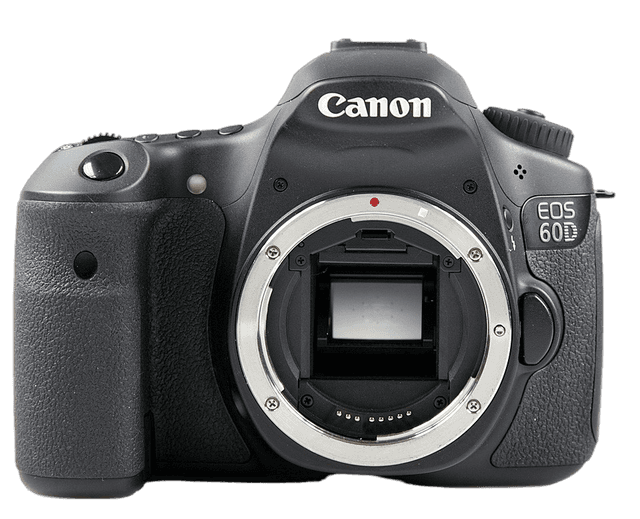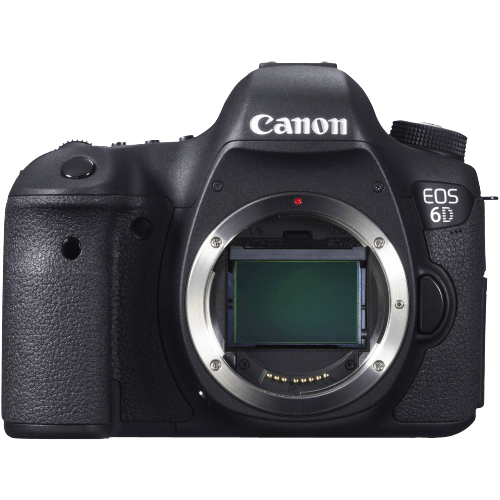Canon EOS 60D vs EOS 6D Comparison
Canon EOS 60D

Canon EOS 6D

The Canon EOS 6D outperforms the Canon EOS 60D with a score of 59/100 compared to 47/100. Both cameras are DSLRs, announced in 2012 and 2010, respectively. They share similar dimensions, with the 6D being slightly taller and thinner, and have a similar weight, with the 6D being just 15g heavier.
The EOS 6D excels with its higher score due to better specifications, despite its higher launch price of $2099 compared to the 60D’s $1199. The 60D, however, has its advantages, as it was released at a more affordable price point, making it an attractive option for budget-conscious photographers.
Taking both the advantages and disadvantages of each camera into account, the Canon EOS 6D emerges as the superior choice in terms of performance and specifications, while the Canon EOS 60D offers a more affordable option for those prioritizing cost.
Canon EOS 60D vs EOS 6D Overview and Optics
The Canon EOS 6D outperforms the Canon EOS 60D in optics with a score of 61/100 compared to the 60D’s 43/100. Both cameras share some common specifications, such as an 18-megapixel CMOS sensor, a DIGIC image processor, and no image stabilization. However, the 6D has a higher megapixel count at 20.2, a faster processor (DIGIC 5+), and a better DXOMARK score for the sensor (82).
The EOS 6D’s full-frame sensor size contributes to its superior optics performance compared to the 60D’s APS-C sensor. This larger sensor allows for better low-light performance, increased dynamic range, and shallower depth of field. Additionally, the Canon EOS 6D is compatible with Canon EF lenses, providing a wider range of lens options for photographers.
On the other hand, the EOS 60D has a slightly faster shooting speed at 5.3 frames per second, compared to the 6D’s 4.5. This may be beneficial for photographers who prioritize capturing fast-moving subjects. However, this is a relatively minor advantage when considering the overall optics performance.
The EOS 6D’s higher megapixel count, better sensor, and full-frame sensor size contribute to its superior optics performance. Meanwhile, the EOS 60D’s faster shooting speed may be beneficial in specific situations, but it is not enough to outweigh the advantages of the 6D. As a result, the Canon EOS 6D is the clear winner in terms of optics quality, offering better image quality and a wider range of compatible lenses.
Canon EOS 60D vs EOS 6D Video Performance
When comparing the video capabilities of the Canon EOS 60D and the Canon EOS 6D, both cameras have a video score of 43/100. This equal score reveals that they share similar video features and performance.
Both the Canon EOS 60D and the EOS 6D offer Full HD video resolution with maximum dimensions of 1920 x 1080, providing users with high-quality video capturing capabilities. Additionally, both cameras have a maximum video frame rate of 30fps, ensuring smooth and consistent video recording. Neither camera has built-in time-lapse functionality, which means that users would have to rely on external accessories or software for time-lapse video creation.
Despite the identical scores and shared specifications, there may be some differences in video performance between the two cameras due to factors such as sensor size, image processor, and autofocus capabilities. However, these differences would not significantly impact the overall video capabilities of either camera.
Although the Canon EOS 60D and the EOS 6D share the same video score and specifications, users may still consider other factors such as price, body size, and additional features when choosing between the two cameras. The Canon EOS 60D may appeal to users who prefer a more compact and affordable camera, while the EOS 6D may be more suitable for those who prioritize full-frame sensor and enhanced low-light performance.
In the end, the Canon EOS 60D and the Canon EOS 6D offer similar video capabilities with no clear winner in this aspect. Users should evaluate their individual needs and preferences to determine which camera best fits their video requirements.
Canon EOS 60D vs EOS 6D Features and Benefits
The Canon EOS 60D and Canon EOS 6D both have a feature score of 57/100. These cameras share some similarities in their specifications, including a 3-inch screen size and a screen resolution of 1040000 dots. Neither camera has a touchscreen or Bluetooth capability.
The Canon EOS 60D has a flip screen, which the Canon EOS 6D lacks. This feature allows for easier composition of shots from various angles, providing flexibility in capturing images. The flip screen is a clear advantage for the EOS 60D, making it more versatile in different shooting situations.
On the other hand, the Canon EOS 6D boasts GPS and WIFI capabilities, which the Canon EOS 60D does not have. GPS is useful for geotagging photos, enabling users to track the location where the images were taken. WIFI allows for easy sharing and transfer of images to compatible devices, providing convenience to photographers. These features make the EOS 6D more suitable for those who value connectivity and location tracking.
Despite having the same feature score, the Canon EOS 60D and Canon EOS 6D have different strengths. The EOS 60D’s flip screen makes it more adaptable to various shooting scenarios, while the EOS 6D’s GPS and WIFI connectivity cater to those who prioritize ease of image sharing and location tracking. Photographers should consider these differences when deciding which camera best suits their needs and preferences.
Canon EOS 60D vs EOS 6D Storage and Battery
The Canon EOS 60D and Canon EOS 6D both have a storage and battery score of 45/100. They share identical specifications in terms of memory card slots, accepted memory cards, battery type, and USB charging. Both cameras have one memory card slot and accept SD, SDHC, and SDXC cards. They use the LP-E6 battery type, and neither offers USB charging.
The Canon EOS 60D has a slightly longer battery life, providing 1100 shots per charge. This advantage allows users to take more photos before needing to replace or recharge the battery. On the other hand, the Canon EOS 6D offers a battery life of 1090 shots, which is only slightly less than the 60D.
Despite the minor difference in battery life, both cameras perform similarly in terms of storage and battery capabilities. The identical scores reflect their shared specifications and overall performance in this category. Therefore, potential buyers should consider other factors, such as general specifications, optics, video, and features, when deciding between these two cameras.
Canon EOS 60D vs EOS 6D – Our Verdict
Are you still undecided about which camera is right for you? Have a look at these popular comparisons that feature the Canon EOS 60D or the Canon EOS 6D:

